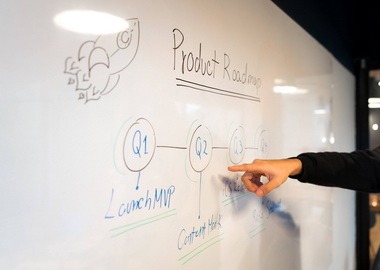eLearning Portal Development: 7 Challenges and Solutions
The eLearning industry is booming. According to Global Market Insights, it is expected to reach $1 trillion in value by 2032.
This might be the best time to invest in edTech, especially eLearning portals, yet this opportunity also comes with some difficulties. If you want to know whether an eLearning portal is a good fit for your organization, read on.
We’ve collected the main challenges in developing an eLearning portal and how you can solve them. We’ll discuss how you can attract and keep millions of users, support course creators with smart design, and reduce development costs.
The main difference between portal and website is their functionality. Web portals are complex, interactive systems with diverse features and content that users can access only when they create an account and log in.
An eLearning portal is a web portal specifically made for online education. Users (course creators, students, etc.) have to register and log in to access the dashboard, their progress reports, their rewards, and any other features the portal provides.
Since there are a ton of different online learning portals, here are the two most common examples.
Portals for educational institutes
Schools, colleges, and universities usually have some sort of online eLearning portal. Its functionalities include administration, class schedules, learning materials, grades, reports, and more.
Think of it as an added service or tool for the institute’s citizens. In this sense, corporate training portals and any other enterprise eLearning portal can also fall into this category.
Portals for eLearning courses
While institute portals usually serve as an online tool for brick-and-mortar organizations, these portals only exist on the Internet, and users usually have no offline connection with the school or teachers. They are creating an account purely to acquire some skill or knowledge or create a course to teach it. The most famous ones are Udemy, Skillshare, and Coursera.
1. Challenge: Saturated market
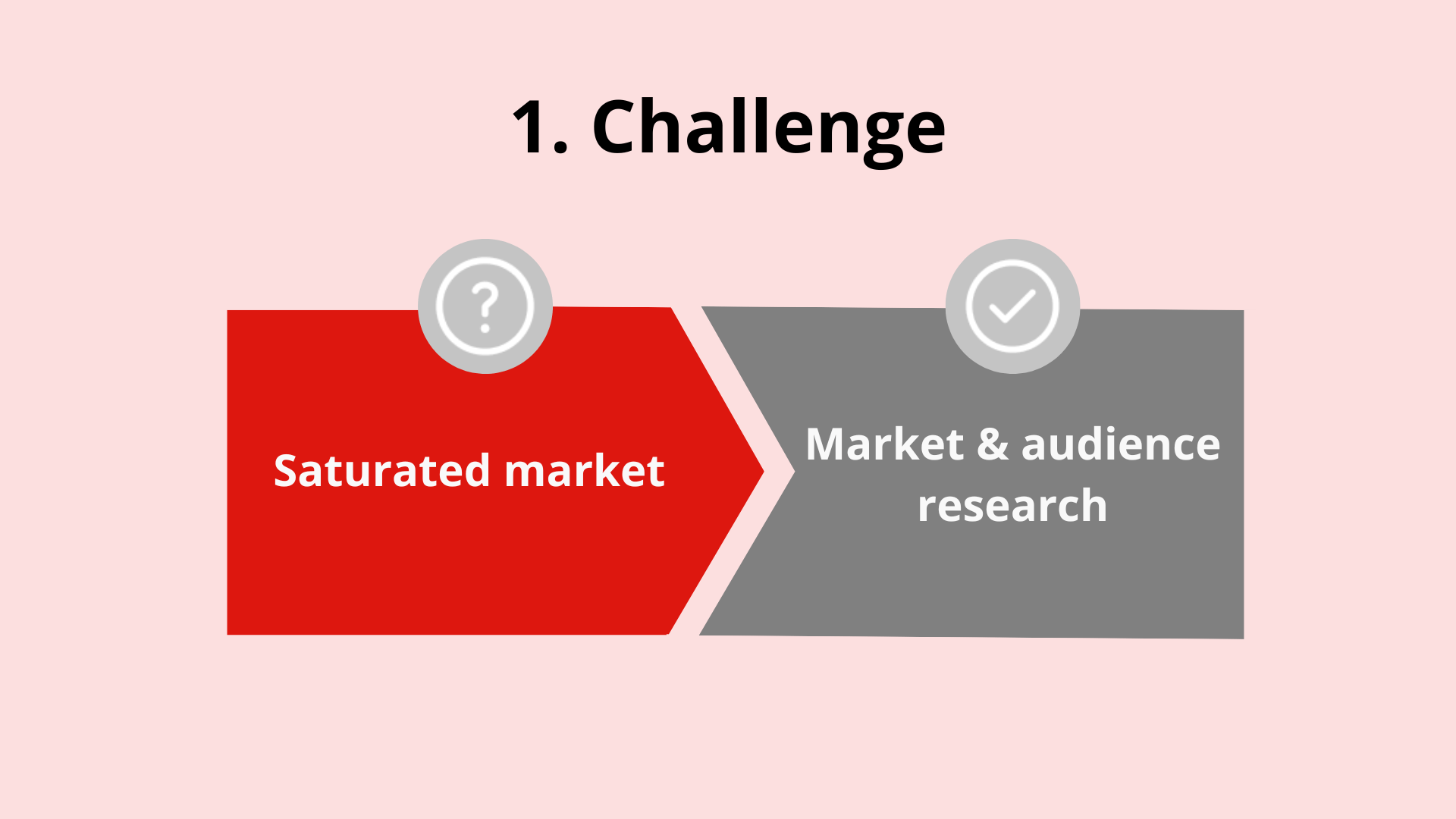
With so many competitors in such a rapidly growing industry, how can you stand out? How can you attract and keep users in a way that is profitable?
Of course, these questions and challenges of eLearning portal creation are not unique to this market. Every company in every industry has to find an answer to them.
Solution: Market and audience research
It’s a cliche, but thorough market research and targeting a specific audience can help you overcome these eLearning challenges.
To develop a successful eLearning portal, you need to know your audience’s interests and issues, digital proficiency, and whether they can access high-speed internet and a suitable device.
Every feature and design decision has to reflect who your future users are and how your services can support them.
2. Challenge: Low engagement and retention rate
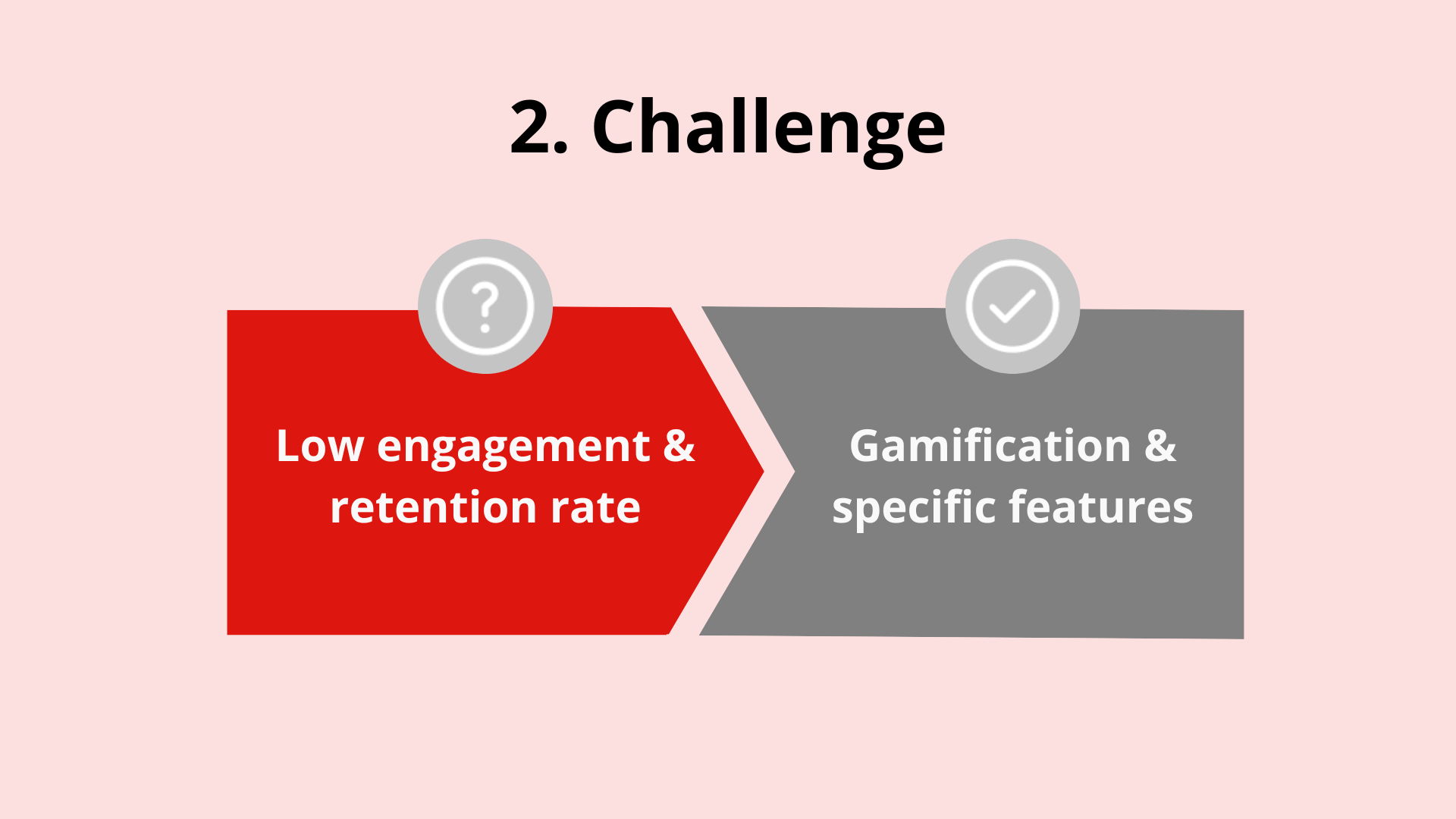
Online courses are famous for their low completion rates. On average, they are between 15% and 30%, but the statistics differ. And the main reason for this is that after enrolling, students don’t find the courses engaging, interesting, or entertaining.
In general, interactive learning can significantly increase eLearning engagement and lower the dropout rate. So let’s see some options for solving eLearning development challenges in this regard.
Solution: Gamification and audience-specific features
Gamification is the best way to attract and engage your audience. Just think about Duolingo, one of the fastest-growing language-learning apps in the world. To keep their over 500 million users, they turn learning into an exciting experience.
You can receive rewards, see your progress in achieving levels, compete for a place on the leaderboard, and even interact with other users.
The benefits of gamification in eLearning cannot be underestimated. It boosts motivation, supports the learning process, and increases user retention.
Besides gamification, a user-friendly design is also crucial for success. You have to design effective navigation bar to help users with disabilities navigate and implement other solutions for accessibility.
Your UX/UI designers should also create smart notifications to remind users of their progress and lure them back to the portal.
And last, but not least, you should always test and improve your design solutions to accommodate the changing needs of your audience.
3. Challenge: Course creators with less tech skills
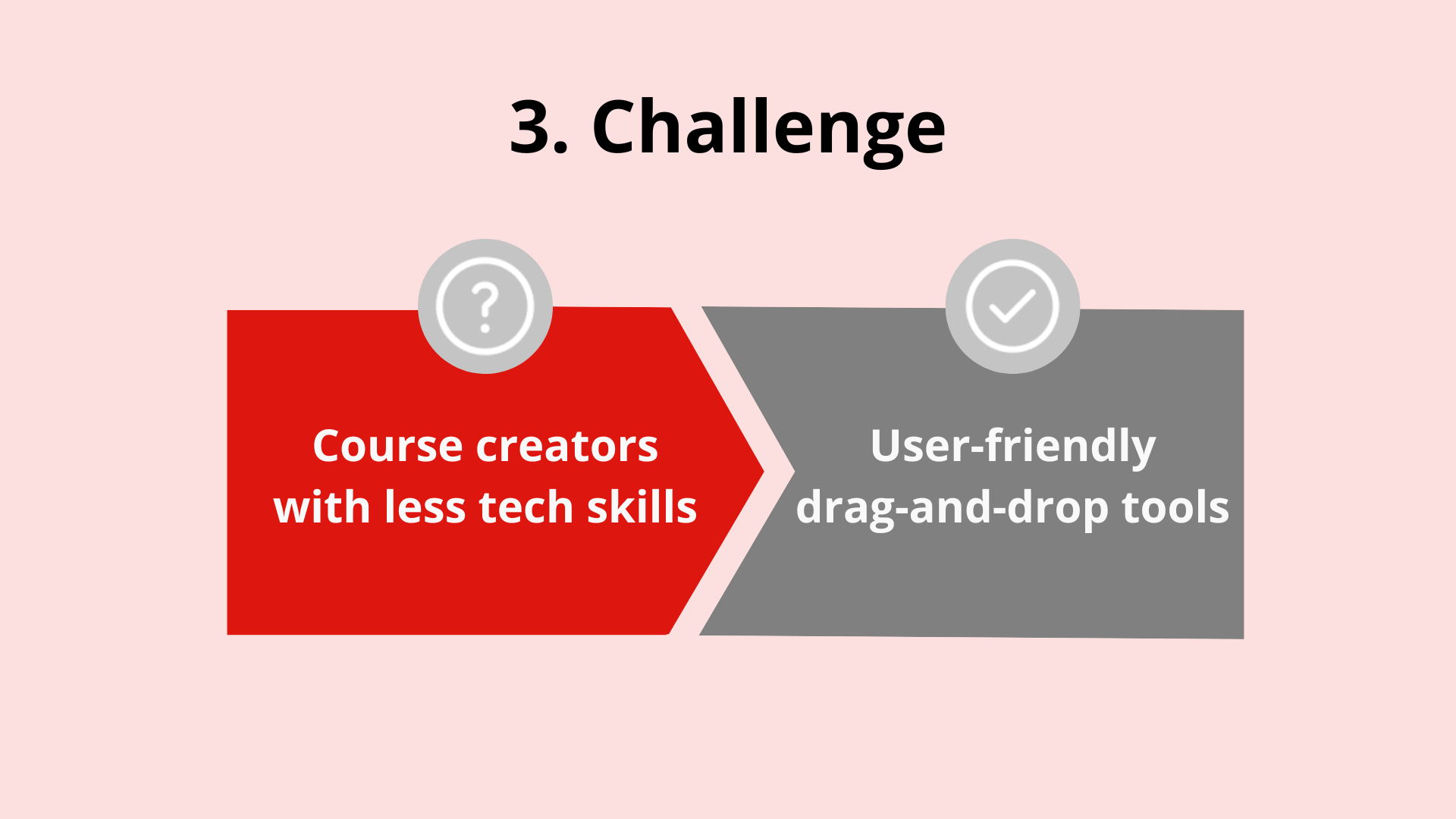
When we said that you have to know your audience, we also meant that about those who provide the content for your portal.
One of the difficulties in eLearning portal development is that sometimes you have to create two portals. One for the students and one for the teachers/course creators/administrators.
The admin side of the portal has to adapt to the users’ needs. Online course creators can be of all ages and occupations, with varying levels of tech competencies.
If they have less tech experience, chances are, they cannot use complex systems. That’s why a teacher-friendly design is a must.
Solution: User-friendly drag-and-drop tools
To resolve this problem, your eLearning portal should offer simple tools for course creators to build their own courses.
White labeling is a great way to help your users customize their content to fit their teaching style, language, and special needs. Intuitive drag-and-drop tools are especially popular since they are easy to use.
If you want to delve deeper into the development challenges of the eLearning portal, you should also consider using a modular infrastructure.
Developers usually suggest this approach because it is easier to scale specific parts of the system. With a modular architecture, you can add new features and attract new users to stay competitive.
Not sure how to start your eLearning project?
Avoid the headache! Solve all challenges with our expert guidance.<br />
DISCOVER OUR SERVICES4. Challenge: Storing and protecting a growing amount of content
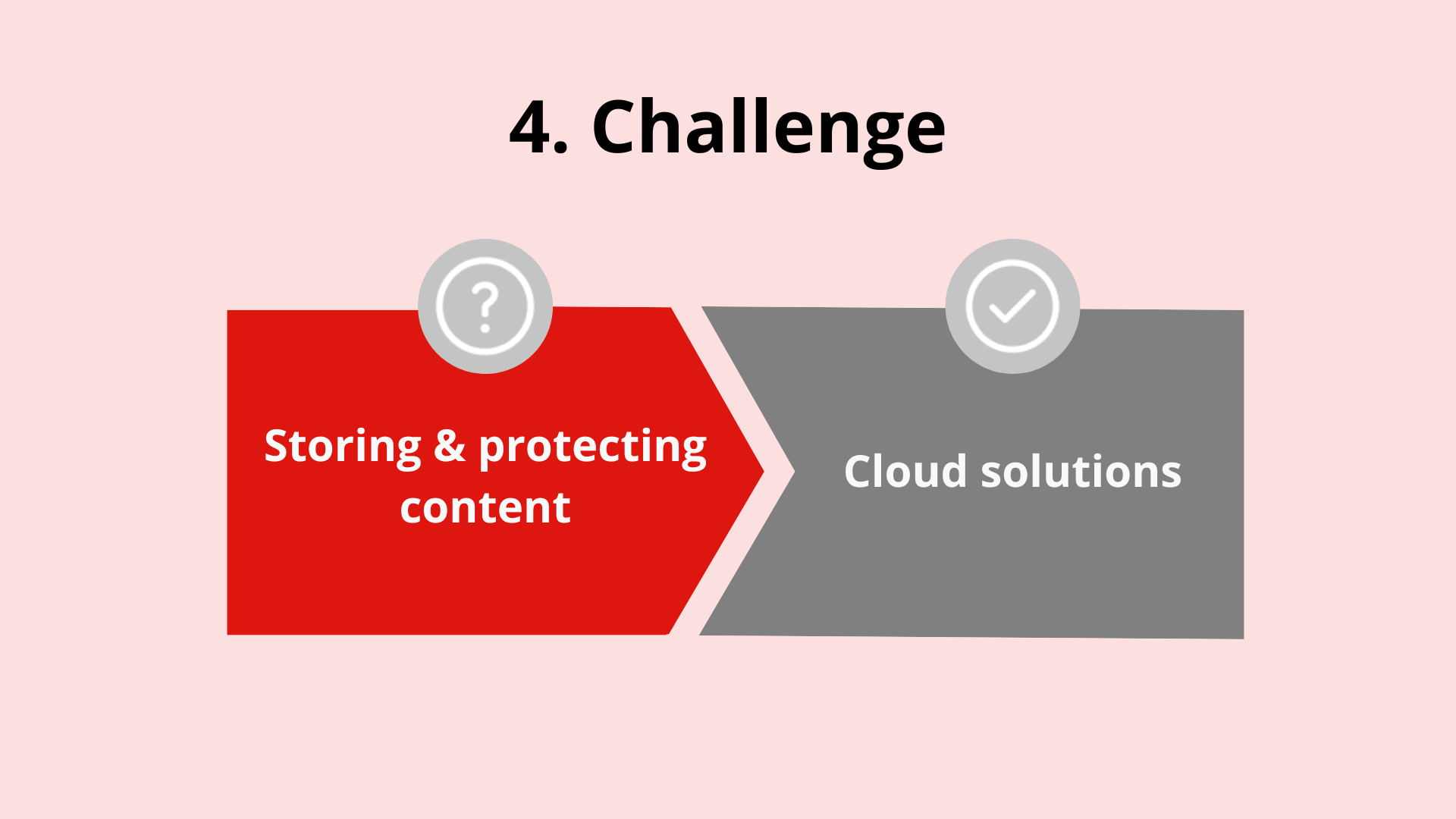
One of the main challenges in developing an eLearning portal is creating a solid base that can handle a large amount of content without crashing. Online courses can contain videos, high-resolution images, downloadable materials (like workbooks), or even live calls and events.
Your eLearning portal has to accommodate the heavy traffic brought by a growing user base. It must also provide security and data protection. Especially for the sensitive personal data users keep in their accounts.
Solution: Cloud solutions
That’s why eLearning developers usually recommend choosing a cloud-based solution. It is great for accessibility, as users can access it from anywhere, and for scalability, as it can adapt to a growing amount of data.
Choosing a cloud provider can also reduce infrastructure and development costs. In addition, a cloud-based system makes web portal integration with third-party tools such as calendars and payment platforms easier.
Cloud service providers usually introduce serious security measures. They conduct regular safety audits, and since cloud-based infrastructures are self-supported, you don’t need to check on them constantly.
5. Challenge: Accessibility for users
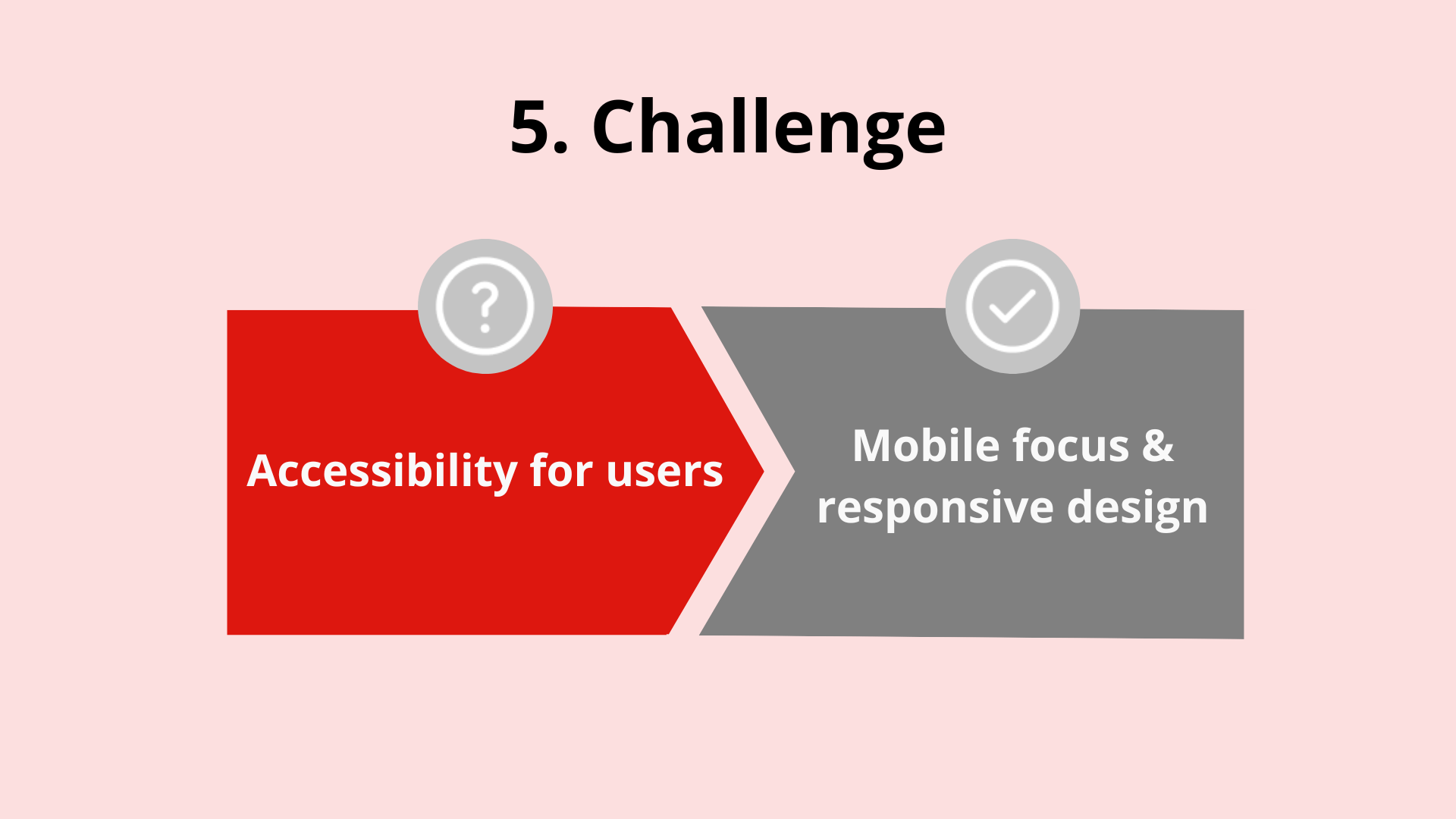
The pandemic showed that eLearning could be a great solution to closing the knowledge gap and providing education to the lower economic classes. However, accessibility is still a huge issue.
To access eLearning portals, users must have a good internet connection and a suitable device.
Many families simply cannot afford to provide personal laptops or computers for every child, so siblings cannot study simultaneously. This can pose some challenges in eLearning portal development.
Solution: Mobile-first approach and responsive design
A great way of solving eLearning development challenges related to accessibility is to focus on mobile devices. While personal computers are expensive and the underprivileged cannot afford to buy one or more, mobile devices are extremely common.
In the US alone, there are over 310 million smartphone users. Mobile devices globally hold almost 60% market share, dominating over desktops and tablets. (Source: StatCounter)
When facing the challenges of eLearning portal development, emphasize responsive design. The goal is to empower users of all devices to enjoy all the functions equally.
6. Challenge: Costs and timeline
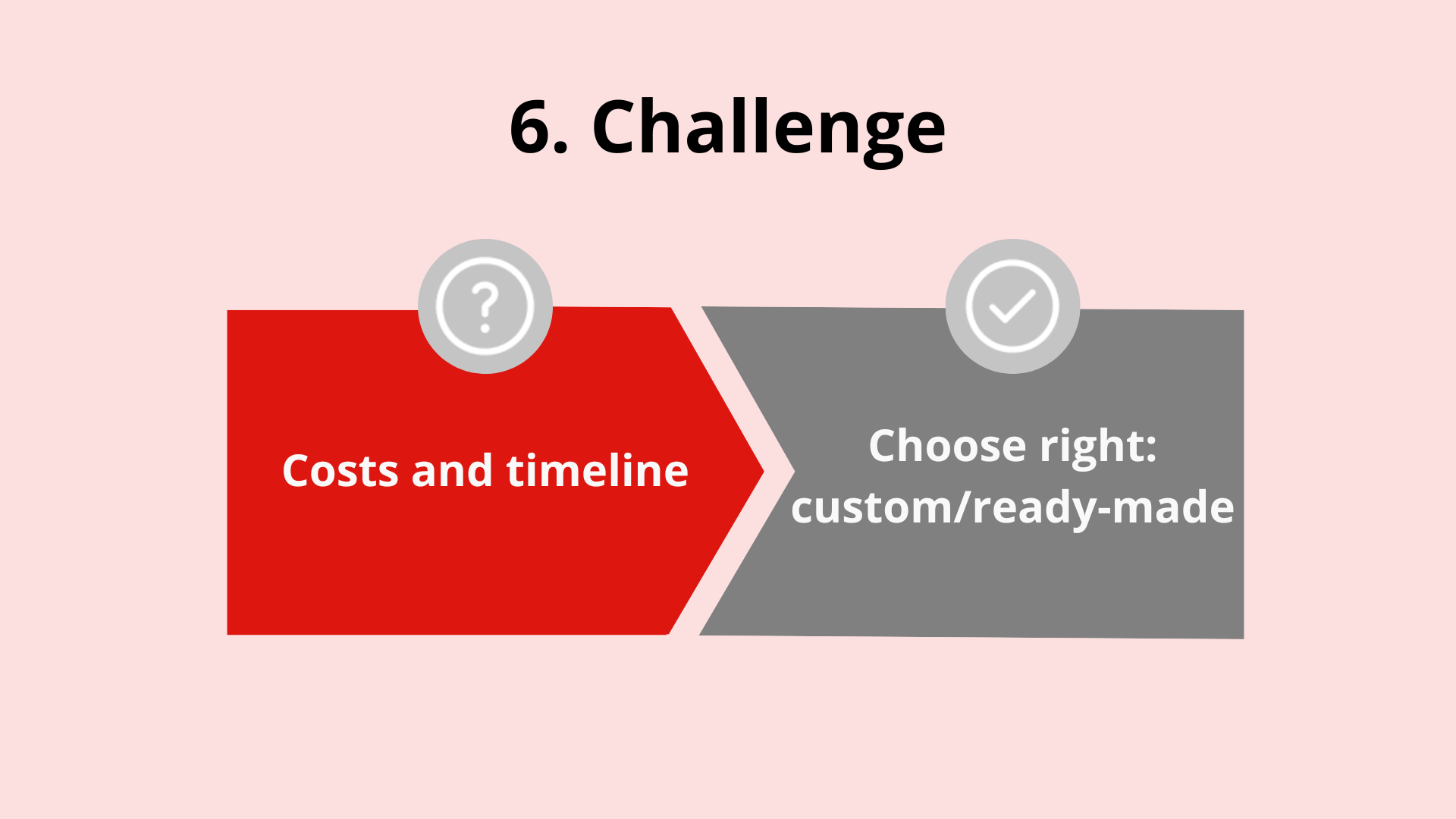
The difficulties in creating eLearning portals can often lead to exceeding the original budget and missing the deadline.
That’s why the planning phase is the most important part of the development process.
To estimate how much web portal development costs, among other aspects, you need to consider:
- The tech stack (technology and infrastructure),
- The number of specialists you need on your team,
- The price of cloud services, third-party tools, etc.
It might also be worth investing in the latest eLearning technology to ensure that your portal can keep up with the trends and attract a large audience.
You should always consider both your short and long-term goals. Focus on your competitive advantage to deliver a strong product for user satisfaction. But also prioritize cost-effective development and quick market release.
Solution: Reduce costs by choosing correctly (custom vs. platform-based portal)
You can explore a few solutions to reduce costs. First, you need to decide whether you want a custom portal or a ready-made one.
Custom eLearning portals are tailored to your audience’s (and your) needs. You will benefit from this option if your ideas are very complex. Let’s say that you want specific features such as integrated video recording tools.
Customizing off-the-shelf software might take much longer and be more expensive than building your portal from scratch.
There is also a high chance that you already have existing materials or courses. These need to be incorporated into your new web portal eLearning platform. This way you can also save money by using this content.
For the integration, developers need to create custom APIs to pull the data from the source. And this process might also be easier with a custom-built portal.
In most cases, developers opt for a hybrid solution, a mix of existing elements and custom-made ones. To decide which one is the best for you, you need to find a trustworthy tech partner and consult with them.
7. Challenge: Choosing your tech partner
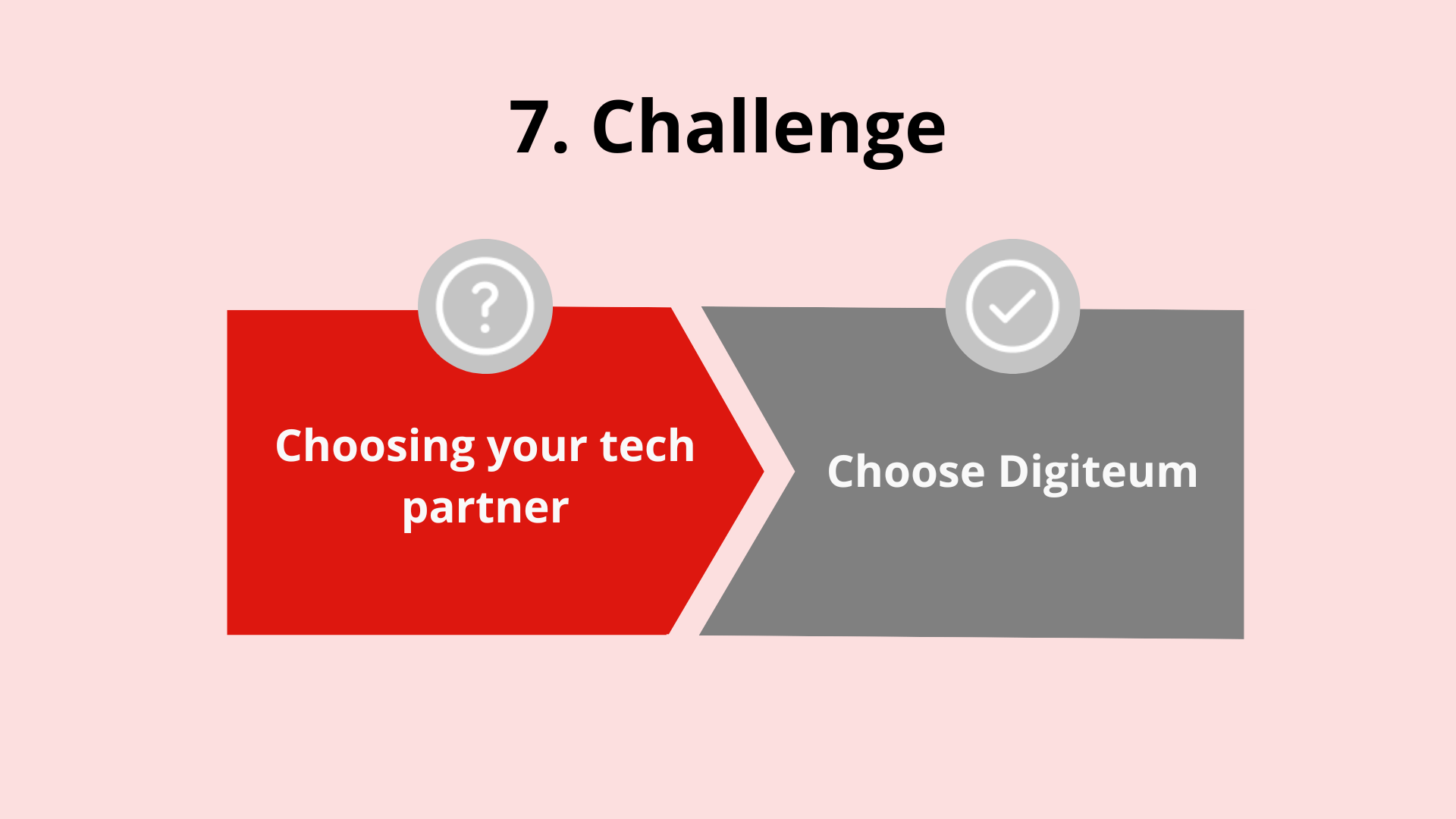
If you don’t want to face the challenges of developing an eLearning portal alone, you should hire an expert team to help you out.
To make this decision, you need to consider several options. Do you want an offshore, nearshore, or onshore partner?
Do you have a tech team already and just missing a few specialists? Do you want to outsource the entire project or just a part of it?
Well, if you’re unsure where to start, we’re here to help! We can guide you through the entire development process, from research to releasing your eLearning portal to the market.
Check out our custom web portal development services, or read on to discover our expertise!
We are proud of our decade-long experience in custom software development. Our portfolio spans various industries, including eLearning. Let us introduce two of these projects so you can see what type of eLearning development challenges we are able to solve.
Language learning apps for sports enthusiasts
Our client, Mudita Sports, partnered with two football clubs, Arsenal and Manchester City. Their goal was to build an app where fans could learn languages with their favorite players.
We’ve developed two iOS apps (one for each club) with a big emphasis on user engagement and edutainment.
This project involved:
- The creation of a white-label app builder so users could customize their own experience
- Gamification techniques, such as quizzes where users could win exclusive player merchandise
- A drag-and-drop editor to manage content and create custom games
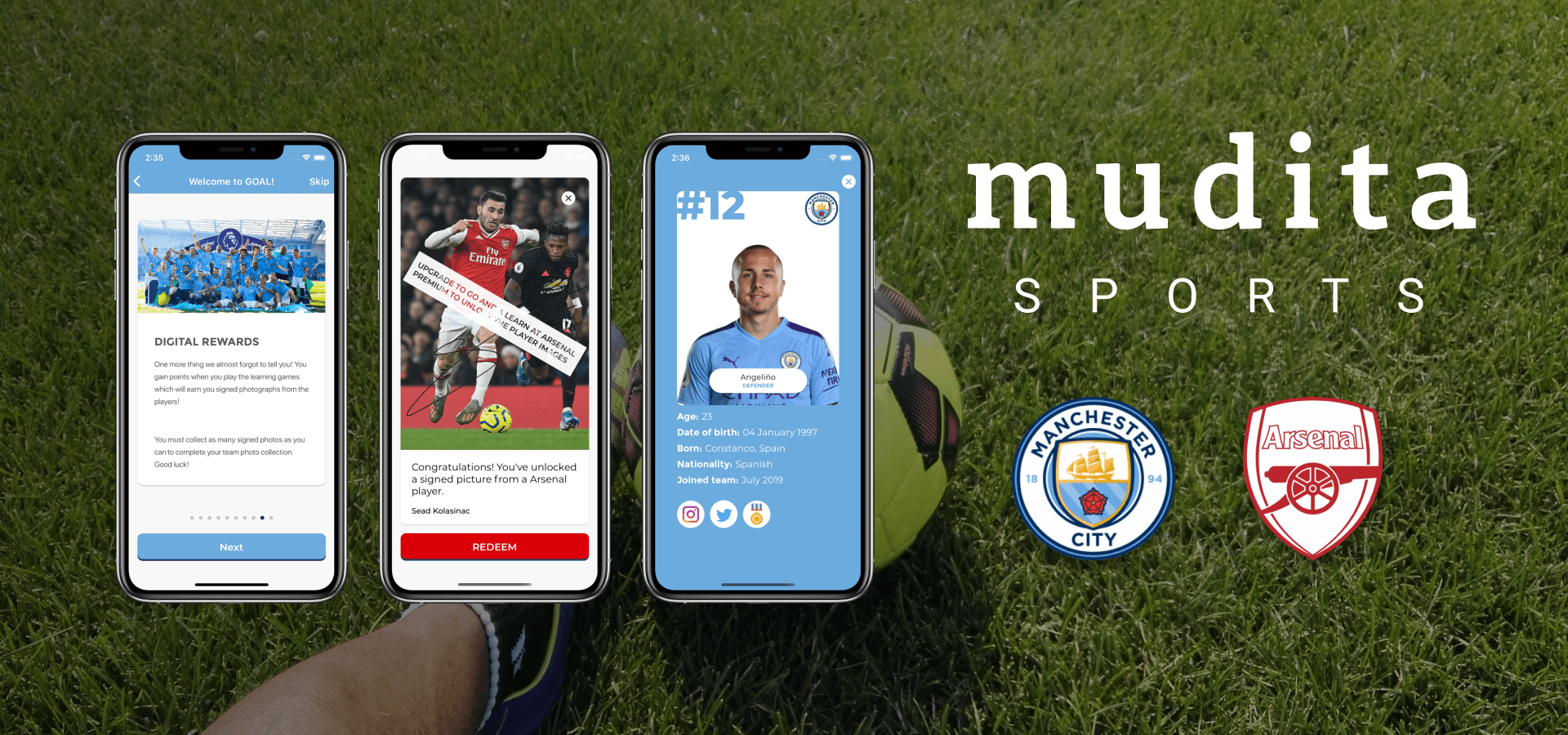
Gamified eLearning solution for Oxford University Press
Our long-term client, OUP, decided to improve their Hindi Dictionary by implementing a Hindi chatbot. Users could learn the language with a guess-a-word game. And the growing number of interactions attracted more visitors to the site in return.
This project involved:
- The design and development of the backend and frontend
- Building a conversational interface
- Integration with the Oxford Languages data storage
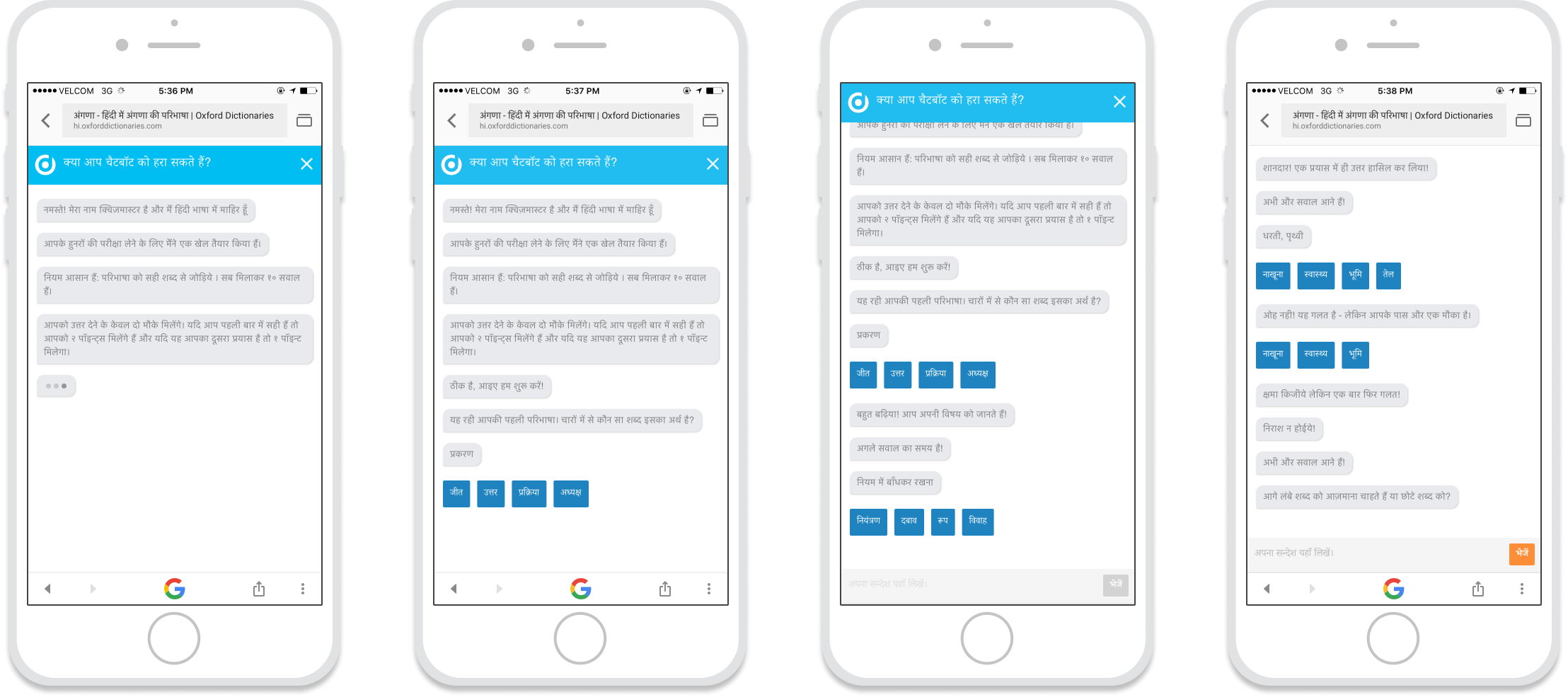
Build an engaging eLearning portal
Take the first step today by starting a discussion.<br />
CONTACT USeLearning is the future. So much so that some believe it could solve the rising tuition prices in higher education long-term. In the US, student debt is a crippling problem for entire generations. With over $1.7 trillion in total student loan debt, families are looking for new ways to get an education for their children to avoid this issue.
And online education is much cheaper than tuition. Not even mentioning the costs of moving to an out-of-state university, or paying for rent.
On the other hand, educational organizations can also benefit from providing an online course for a lower price. Operating an offline campus is not only expensive and complex but also limits the number of students they can accept. Which is not a pressing issue in online education.
eLearning can even overcome challenges, such as providing education to those who are physically unable to attend school and helping them to be part of a community. So, it is high time to invest in this industry, despite the challenges of eLearning portal development.




